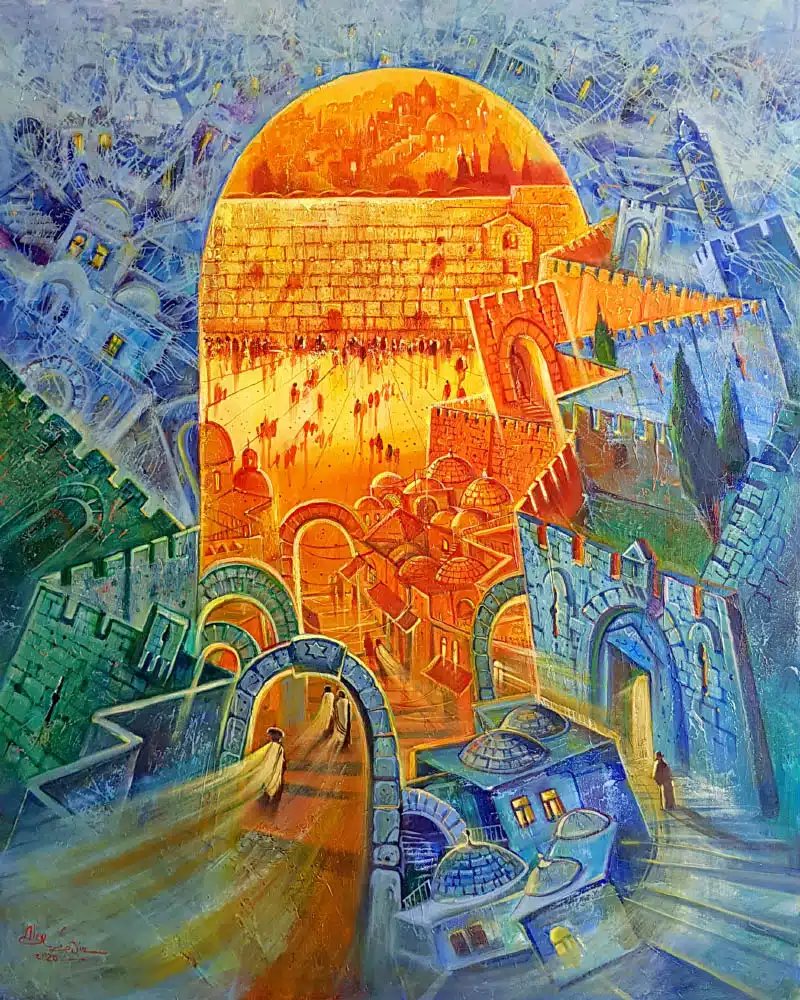
Contemporary Judaica Art
Judaica, widely known as Jewish art, draws explicit inspiration from Jewish culture and traditions that have enriched our lives for centuries. In the realm of painting, there exist various genres, each expressing distinct ideas, some rooted in tradition, and others embracing modernity.
Contemporary Judaica Art reimagines familiar Jewish symbols in a creative and captivating manner, connecting with a broader audience who appreciate both the concept and the artistic style.
Take, for example, “The Heavenly Jerusalem and the Earthly Jerusalem Painting” by the renowned artist Alex Levin.
Contemporary Jerusalem paintings often venture into intricate and less conventional territories. However, this complexity is what makes them intriguing and evocative. Through their art, these painters tell a story not only about themselves but also about the era they inhabit and the enduring Jewish traditions. Jerusalem itself hosts countless galleries and museums showcasing the works of Israeli artists who, like Yaacov Agam, weave the tapestry of Judaism into their creations, displaying familiar religious and cultural symbols on canvas.
Now, let’s delve into a bit more detail about Jewish Art.
Jewish visual arts have an ancient lineage, with roots dating back to the biblical Bezalel. The Bible chronicles the exquisite work of Jewish hands during the construction of the First Temple in Jerusalem under the guidance of King Solomon. Since then, Jewish visual arts have flourished, leaving an indelible mark on Jewish culture worldwide. Historians classify Jewish art into three primary categories: Folk Art, characterized by intricate paper-cuts; Ritual Art, which offers artistic interpretations of ritual objects; and Art by Jews, encompassing a wide array of visual expressions, from painting and sculpture to avant-garde creations.
Bringing Jewish art into our homes is a cherished tradition. While Jewish life is often centered around words and concepts, the significance of fine arts and crafts cannot be understated. This approach to the visual arts is influenced by two key factors: the value of hiddur mitzvah, which encourages the creation of beautiful ritual items and sacred spaces, and the Second Commandment, which cautions against the creation of graven images for fear of their misuse in worship.
Throughout history, Jewish artists have strived to depict Jewish identities and heritage in their works. Jewish painters and sculptors have made their mark in countries around the world, enriching the cultural tapestry with their art.
